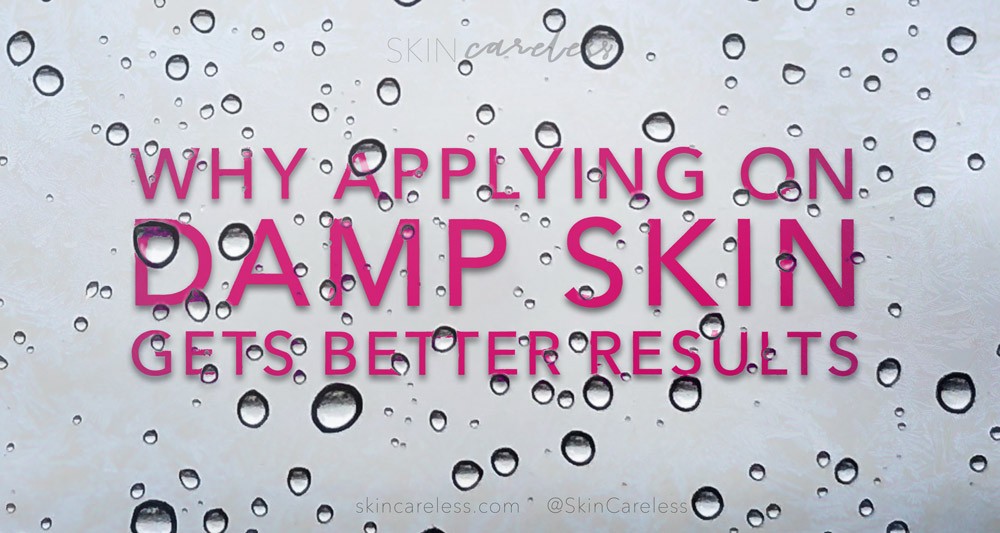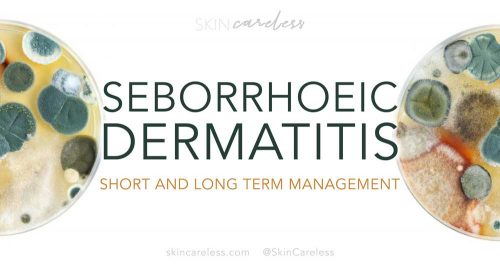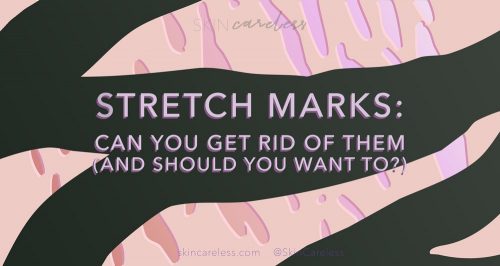There’s huge untapped potential in so many of our daily routines. Little things we do on autopilot that, if optimised, could mean the difference between so much money and time wasted in the long run. Like rearranging your clothes to keep the most used items within reach. Keeping your coffee grounds and using them as compost.
What does that mean for you and your skin? Well, you should always be looking for the small ways to be making your products go further and work better. And I’ve got a doozy for you today: applying products to damp skin to make them work better.
Huh? Naturally, you might think dampness = watering products down = making them less potent. But in the case of skin, as it so often is, the real story is a little more complicated.
What is damp skin?
On the surface, it seems like a simple question. But our body is naturally designed to be waterproof. It’s covered by tightly overlapping skin cells, all held together by carefully pH balanced natural oils and waxes that repel water and bacteria. If you pour water on it, it’ll run right off, protected by that natural barrier. But over time, water – the ultimate solvent – makes its way through, and our skin cells can actually soak up a surprising amount.
Damp skin refers to when your skin has absorbed some water, but has been dried off on the surface.
It doesn’t look much different on the surface alone than dry skin, but deep down, skin that’s been left to soak up some water actually changes significantly. All this water is also soaked up by the thirstiest surface skin cells called corneocytes, which interestingly swell more outwards (roughly by 50%!) as opposed to side-to-side. And water loosens up the waxy sebum and other material in our natural moisturising factor, which lubricates between the skin cells.
How damp skin increases product penetration
Damp skin strikes the perfect balance between too wet (which would water products down or affect their carefully-balanced pH) and too dry.
But surely, super dry skin would be ideal, ready for sucking up product like a sponge and absorbing more readily than pre-dampened skin? Well, as it turns out, studies show that exposure to water or watery hydrators (think hyaluronic acid, glycerin, aloe etc.) increase permeability to products.
Permeability refers to how much and how far the way can get down into the deeper layers. Most of the time, we don’t actually want our products to be absorbed by the uppermost cells. These areas are dead and dry and won’t respond to your carefully thought out routine!
Because when skin is damp the outer skin cells are nice and plump, they no longer suck up any and all skin care you apply. This leaves the good stuff free to penetrate deeply. That means products go further (literally)!
But the main benefit is the effect dampness has on our natural moisturising factors. As these usually water-repelling and waxy deposits are thinned out and melted down, it’s so much easier for your products to work their way deep down between the cells to where they’re needed quickly. For most products, we want them to reach as close to the dermis – the lowest layer of skin and where skin cells are born – as possible.
There’s an extra benefit for other types of products too – hydrophilic products like hyaluronic acid that absorb water will get an extra supply of water to boost their hydrating properties, in addition to water in the air and in the deep layers of skin. And any occlusives you use on top can trap all that hydration in. Perfect!
How to make your skin perfectly damp
Ok – we want damp skin. Seems simple enough – but what’s the best way to get it (and get the tricky balance right)?
The best way to make skin super “damp” and increase skin permeability is by taking a long soak. In most studies of how hydration affects product absorption, the skin was exposed for long periods. So, go indulge in that bubble bath. Then, you can pat your skin surface dry and get applying, with the knowledge that the water had lots of time to loosen up your skin sebum and prep it to receive products.
A steaming machine (or a DIY version using some hot water in a bowl and a towel over the head, or even just a good long shower) is another good choice. Remember, the heat isn’t the key here, it’s the high humidity levels!
If you’re on the go, or prefer to do your routine outside of the bathroom, use a facial mist: spritz a few times and let the small drops soak in without drying them off.
Portable humidifiers are another great option to get just the right amount of moisture.
Regardless of what method you choose, the key really is to let the water sink into the skin to prep it for your products well. Put on too much water and rush, and your products will slide right off!
Once you’re sure you’ve soaked up some water, apply the product you’re hoping to penetrate within less than 30 seconds after you’ve dampened, to avoid giving the water time to evaporate and your sebum any chances of thickening back up again.
Which products work best on damp skin (and which don’t)?
This technique is super versatile – it’s perfect for things like peptides, vitamins, antioxidants, and hydrators. Any product that needs to interact with the deepest layers of skin is a good candidate, so experiment and try it out!
However, there are a few things to keep in mind. Increasing permeability also increases the risk of pissing off your skin. So avoid using strong treatments or medications like tretinoin (Retin-A), benzoyl peroxide, or hydrocortisone on damp skin. These are often already sensitizing and could lead to a lot of flakiness and irritation, or potentially be absorbed into the bloodstream. Usually, it’s specifically recommended that you be careful to dry your skin well before applying these types of products just in case.
Some products rely on a very specific pH window to work. These are usually acid exfoliators; for example, salicylic acid or glycolic acid. If you apply them to wet skin, it could dilute and deactive its exfoliating properties.
Sunscreen or other products like foundation where you really want a super even application also don’t work well with damp skin. The water will often mess with the coverage and formula and lead to a separated mess.
Will you be trying out the damp skin method?





